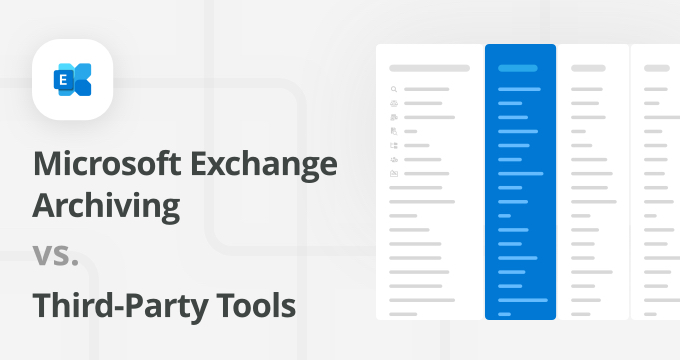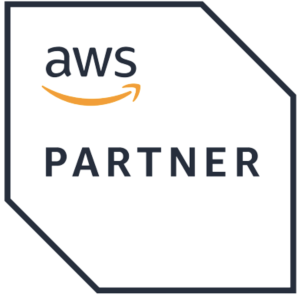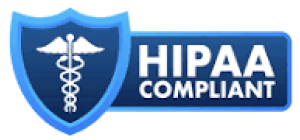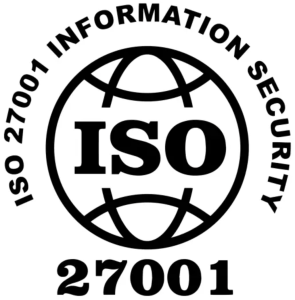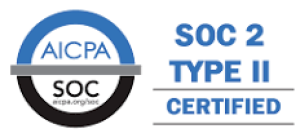Regulatory compliance is critical for organizations, especially those in highly regulated sectors like finance, healthcare, education, and government.
Compliance involves adhering to laws, regulations, guidelines, and specifications relevant to business operations. Failing to comply with these regulations can result in legal penalties, fines, or reputational damage.
In this article, we’ll cover the following:
- What is regulatory compliance
- Why is it essential
- What are some notable regulatory compliance examples and risks
- How to ensure regulatory compliance
- Why is data archiving crucial for staying compliant with regulations
What Is Regulatory Compliance?
Regulatory compliance refers to an organization’s adherence to external laws and internal policies designed to protect stakeholders and ensure ethical business practices. Compliance requirements vary significantly depending on industry, region, and specific business type.
This concept should be distinguished from corporate compliance, which has to do with a company’s ability to establish and follow its own processes, policies, and workflows. The purpose of corporate compliance, which is internal at its core, is that a company and its employees adhere to all applicable laws, regulations, standards, and ethical practices relevant to their industry and operations.
Here are some notable examples of regulatory compliance bodies and laws for different industries:
- Health Insurance Portability and Accountability Act (HIPAA) — Requires healthcare providers to secure patient health information and ensure its confidentiality.
- Sarbanes-Oxley Act (SOX) — Imposes strict record-keeping and financial reporting requirements on public companies to prevent corporate fraud.
- General Data Protection Regulation (GDPR) — Mandates stringent data protection measures for the personal data of EU citizens, affecting organizations globally.
- Financial Industry Regulatory Authority (FINRA) — Regulates brokerage firms to maintain transparent and ethical trading practices.
- Freedom of Information Act (FOIA) — Requires public access to government records to promote transparency.
- Federal Information Security Management Act (FISMA) — Requires U.S. federal agencies to protect their information systems and data through risk management frameworks and cybersecurity measures.
- Dodd-Frank Wall Street Reform and Consumer Protection Act — Introduces comprehensive regulations on financial institutions to enhance transparency, reduce systemic risk, and protect consumers from abusive financial practices.
- California Consumer Privacy Act (CCPA) — Provides California residents with enhanced privacy rights, including the right to know what personal data is collected, the right to delete it, and the right to opt out of its sale.
- Payment Card Industry Data Security Standard (PCI DSS) — Establishes security standards for organizations that handle credit card transactions to protect cardholder data.
- Gramm-Leach-Bliley Act (GLBA) — Requires financial institutions to explain their information-sharing practices and protect sensitive customer data.
Understanding these regulatory compliance examples helps organizations recognize the scope of obligations they must meet to operate within the legal framework of their industry.
What Are the Benefits of Regulatory Compliance?
Organizations should view regulatory compliance as a strategic opportunity to gain a competitive edge, not just a means of avoiding fines.
Here are some key benefits of staying compliant:
Enhanced reputation and trust
Compliance demonstrates an organization’s commitment to ethical business practices and legal obligations.
This builds trust with customers, partners, and stakeholders, enhancing the company’s reputation. Organizations that consistently comply with regulations are often viewed as more reliable, transparent, and responsible. As a result, they can expect increased customer loyalty and stronger business relationships.
Reduced risk of legal issues
Maintaining compliance minimizes the risk of legal disputes, penalties, and sanctions that can arise from regulatory breaches.
This proactive approach not only saves organizations from costly legal battles but also ensures smoother operations by preventing interruptions caused by investigations or litigation.
Compliance reduces exposure to regulatory scrutiny, which leads to financial and operational stability.
Improved operational efficiency
Regulatory compliance often requires the implementation of structured processes, clear documentation, and defined workflows.
These requirements can result in improved operational efficiency as organizations streamline their procedures to meet compliance standards.
Well-defined processes minimize errors, enhance data management, and ensure that employees adhere to best practices — factors which are crucial for more effective and efficient business operations.
Data protection and security
Many compliance regulations, such as GDPR, CCPA, and HIPAA, emphasize the importance of data security and privacy. Thanks to these standards, organizations enhance their data protection measures to safeguard sensitive information from breaches and unauthorized access.
Considering that the average cost of a single data breach is almost $5 million, while the number of data breaches went from 447 in 2012 to more than 3,200 in 2023, it’s clear that organizations need to be very serious about safeguarding their data.
Competitive advantage
Companies that comply with regulatory standards often have an edge over non-compliant competitors. Regulatory compliance can be a selling point, demonstrating the organization’s commitment to quality, security, and ethical practices.
This competitive advantage can attract customers who prioritize working with trustworthy and compliant partners, ultimately driving business growth.
Culture of accountability and integrity
In companies where employees understand the importance of following procedures and maintaining ethical standards, there’s a strong culture of accountability. This culture encourages transparency and integrity, leading to better decision-making and a more positive work environment.
Compliance also reduces the likelihood of internal fraud, misconduct, and other unethical behaviors.
The Risks of Non-Compliance
Regulatory compliance risk refers to the potential exposure to legal penalties, financial loss, and reputational damage when an organization fails to comply with relevant laws and regulations.
Key risks associated with non-compliance include:
- Financial penalties. Fines for non-compliance can range from thousands to millions of dollars. For instance, GDPR violations can result in fines of up to €20 million or 4% of the company’s global annual revenue. As for HIPAA, violations can lead to penalties of up to $50,000 per violation, with annual maximum fines reaching $1.5 million, depending on the level of negligence and the number of violations.
- Legal action. Regulatory bodies can pursue legal action against non-compliant organizations, leading to costly lawsuits, settlements, or sanctions.
- Operational disruption. Different investigations and penalties can cause significant operational disruptions that impact business continuity and productivity.
- Reputational damage. Non-compliance can severely damage an organization’s reputation and erode customer trust, which can potentially lead to a loss of business.
To mitigate these risks, you need to take a proactive approach to compliance, where data archiving plays a crucial role.
How to Create a Regulatory Compliance Plan
Creating a regulatory compliance plan is essential for organizations to effectively manage their compliance obligations and minimize associated risks.
A well-structured compliance plan outlines the policies, procedures, and tools needed to ensure that the organization meets all regulatory requirements.
Here are the key steps to creating an effective regulatory compliance plan:
Identify applicable regulations and standards
The first step in creating a compliance plan is identifying the regulations and standards that apply to your industry, location, and business operations. This could include laws such as GDPR or SOX or industry-specific guidelines set by regulatory bodies like FINRA and HIPAA.
Understanding which regulations apply will help you determine the specific requirements your organization must meet.
Conduct a risk assessment
Perform a comprehensive risk assessment to identify areas where your organization may be vulnerable to non-compliance.
This involves evaluating current processes, data management practices, and potential gaps in regulatory adherence. The risk assessment will help prioritize compliance efforts and identify high-risk areas that need immediate attention.
Develop policies and procedures
Create detailed policies and procedures that outline how your organization will meet compliance requirements.
These documents should cover key areas such as data retention, security protocols, employee conduct, and response procedures for compliance breaches. Policies should be clear, accessible, and regularly updated to reflect changes in regulations.
Implement compliance training programs
Training employees on compliance policies and procedures is crucial to ensure that everyone understands their roles and responsibilities.
Regular training sessions, workshops, and compliance resources help employees stay informed about regulatory requirements and internal standards. This fosters a culture of compliance and reduces the likelihood of accidental breaches.
Leverage regulatory compliance tools
Don’t leave anything to chance, or in this case, manage compliance manually. Regulatory compliance tools and software can help you automate compliance processes, monitor adherence, and manage data securely.
This way, you can make tracking, documenting, and demonstrating compliance with regulatory standards easier.
Establish monitoring and audit processes
Regular monitoring and auditing are essential to ensure ongoing compliance. Implement procedures to routinely review compliance activities, conduct internal audits, and assess the effectiveness of your compliance plan.
Use audit trails, reporting tools, and compliance dashboards to track compliance performance and quickly identify any areas of concern.
Maintain documentation and reporting
Accurate and up-to-date documentation is critical for demonstrating compliance during audits or regulatory inspections. Keep detailed records of compliance activities, risk assessments, training sessions, and any corrective actions taken in response to non-compliance incidents.
Proper documentation supports transparency and provides a clear record of your compliance activities.
Review and update the compliance plan regularly
Regulations are continually evolving, so it’s important to regularly review and update your compliance plan to reflect any changes in laws or industry standards. Periodic reviews ensure that your policies, procedures, and tools remain aligned with current regulatory requirements, helping your organization stay compliant over time.
Why Data Archiving Is Crucial for Regulatory Compliance
Data archiving plays a pivotal role in ensuring regulatory compliance by helping organizations securely store and manage data that must be retained for specific periods.
Many regulations, such as SOX and HIPAA, mandate the retention of records for several years.
Proper data archiving ensures that these requirements are met while also protecting sensitive information from unauthorized access or tampering. Additionally, it simplifies ediscovery processes, making it easier to retrieve data during audits or legal investigations.
Jatheon’s data archiving solutions provide organizations with the tools needed to securely archive electronic communication records like email, social media, text messages, content from chat apps, phone calls, and major collaboration platforms, to help them meet regulatory requirements and mitigate compliance risks.
By utilizing advanced search, encryption features, customizable retention policies, and audit trails, Jatheon enables businesses to manage their data efficiently, ensuring that it remains accessible and protected over time, ultimately reducing the risk of non-compliance and financial penalties.
Ensure compliance with federal and industry regulations with Jatheon regulatory compliance solutions.
Ensure compliance with federal and industry regulations with Jatheon regulatory compliance solutions.
Summary of the Main Points
- Regulatory compliance refers to adhering to external laws and internal policies designed to protect stakeholders and ensure ethical practices. It differs from corporate compliance, which focuses on internal policies and workflows.
- Regulatory compliance is a critical factor in many industries, including finance, healthcare, education, and government.
- Key examples of compliance regulations include HIPAA, SOX, GDPR, FINRA, FISMA, Dodd-Frank, and CCPA, each governing specific sectors and requiring stringent data protection, transparency, and ethical business conduct.
- Failure to comply results in financial penalties, legal action, operational disruption, and reputational damage.
To manage regulatory compliance properly, implement a regulatory compliance plan and deploy a data archiving solution.
FAQ
What is regulatory compliance risk?
Regulatory compliance risk refers to the potential for financial loss, legal penalties, or reputational damage that an organization faces when it fails to comply with laws, regulations, or industry standards. This risk arises from non-adherence to requirements set by governing bodies, which can result in fines, lawsuits, operational disruptions, or loss of customer trust.
What is the difference between regulatory compliance and policy compliance?
Regulatory compliance involves adhering to external laws and regulations set by government or industry bodies, while policy compliance focuses on following internal rules and procedures established by the organization itself in order to adhere to industry standards and best practices.
How to monitor regulatory compliance?
To monitor regulatory compliance, organizations should implement regular audits, use compliance management software, track changes in relevant laws, and maintain clear documentation of compliance activities. Additionally, appointing a compliance officer and conducting employee training can help ensure continuous adherence to regulatory requirements.

